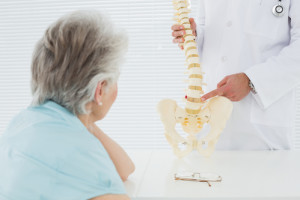When you have a serious injury, such as breaking your arm, tearing your ACL ligament or even one as simple as banging your knee against a hard object, the limitations of functional capacity that these injuries have on your body can be quite debilitating. The up side for these types of injuries however is that they heal and you are able to return to your normal everyday tasks. Life is quite different however for the person with a spinal cord injury (SCI). Unlike a broken bone which can heal, once there is damage to your spinal cord, only a fraction of people will regain full function again. Hence, most endure abnormal or limited motor and sensory function for the rest of their lives. Yet, just because you are limited in your functional abilities, you are not doomed to be a “couch potato” for the rest of your life. Keeping active in as many ways as possible, and rehabilitating any deficiencies is important for your body’s integrity, and for the electrical stimulation of all muscles in your body, even if they aren’t voluntarily working.
What is Spinal Cord Injury and what affects does it have on the body?
SCI is damage to your spinal cord which translates to impairments with muscular function, sensation and mobility. Spinal cord injuries come in different shapes and forms and cause different limitations for each person. Quadriplegia is described as loss of function before the neck, and Paraplegia is loss of function below the chest. However, the spinal cord does not have to be severed to cause some loss of functional ability in muscles, nerves and organs. Something as small as slight bruising or compression to the spine can cause paralysis in muscles resulting in impaired contractility and sensation in the muscle.
Complete vs. Incomplete SCI
The affects that a SCI has on the body depends on the location of injury and whether the spinal cord is severed completely or incompletely. When someone has a complete SCI, there are no sensory or nerve inputs to and from the brain and the limbs and organs below the injury site. In an incomplete SCI, a person may have some sensation and control of the limbs and organs below the injury site.
The degree of functional ability after a SCI is measured as follows, according to the American Spinal Injury Association (ASIA) Impairment Scale.
- A = Complete: No preservation of sensory and motor function in the sacral spine (S4-S5).
- B = Incomplete: Sensory function preserved but not motor function below the neurologic level (including S4-S5).
- C = Incomplete: Motor function is preserved and more than half of the muscles have a muscle grading of less than 3 below the neurologic site.
- D = Incomplete: Motor function is preserved and half of the muscles have a muscle grading of 3 below the neurologic site.
- E = Normal: Normal sensory and motor function
Why is Exercise so Important?
As you may know, most organs and body parts can heal themselves, however the central nervous system cannot repair itself. In some cases it can take up to 18 months before any initial swelling from the injury reduces and some function returns. In some cases, no function returns. This can cause an immense amount of emotional and physical stress, reduce self-esteem, lower quality of life and cause a loss of muscular mass, strength and contractility. This is why it is extremely important for those with a SCI to engage in regular physical activity for more than just functional ability.
There have been several studies conducted on the benefits of physical activity for those with a spinal cord injury and research shows that engaging in physical activity 2 – 3 times per week may be adequate enough to achieve both cardiovascular and muscular fitness gains.
Some of the amazing benefits of exercise for nervous system diseases or injuries include (but are not limited to):
- Improved muscle strength
- Improved immune system function
- Reduced risk of secondary complications (such as cardiovascular disease, diabetes, urinary tract infections, etc.)
- Improved respiration
- Improved blood circulation
- Improved sensation
- Improved flexibility
- Regulated and Improved body composition
- Increased self-esteem and self- confidence
- Stress management and reduced anxiety and depression
- Increased independence to complete everyday tasks
- Improved overall quality of life
My team and I have personally worked with numerous cases of spinal cord injury and various other nervous system disease and have seen some amazing improvements (see success stories) even those I thought were impossible! Of course in any population, injured or not, there are many barriers to participating in physical activity. Some, which are more specific to SCI, include:
- Low energy levels and interest in exercise
- Limited accessibility to facilities accommodating their impairments
- Limited resources (such as exercise programs/classes)
- Lack of knowledge about the best type of exercise to suit them
It is extremely important to suggest to someone who has a spinal cord injury, but is not currently participating in physical activity, that they consider developing a plan to overcome their barriers and integrate the best suited physical activity into their daily lifestyle.
 Exercise Guidelines?
Exercise Guidelines?
It is common knowledge for people with a SCI or nervous system disease, that activities of daily living (ADLs), balance and simple functional movements most of us take for granted, can be an extremely difficult challenge for them each day. Hence the importance of choosing the right type of exercise that will help overcome these every day hurdles for them. And while it may seem logical to take a ‘conservative’ approach when it comes to exercise prescription, for many, exercises can be risky due to loss of balance and coordination. But this is exactly what the person’s brain and nervous system requires in order to “relearn” the information that it has lost. Unfortunately many of those with SCI are often placed on a recumbent bike or a machine like a leg press limited to those exercises which are considered safe in terms of balance. Yet these exercises require no coordination or balance, as the machine does that for them. In fact these movements are actually training the body to become worse by becoming stronger without the need for these essential skills. Yes they may argue that they are doing an exercise under resistance and strengthening the muscles, but the brain controls the muscles and if it is not challenged with new stimuli, no changes will occur.
When it comes to exercise prescription, it is important to implement exercises that imitate everyday tasks. A good example of this is in our studio where we are currently working with several clients of various movement disabilities to learn to walk unassisted. Their disabilities are a result of disease or trauma, and also nervous system diseases, where our primary focus is prescribing exercises to mimic challenging tasks they encounter each day.
Single leg and balance orientated exercise such as the Toe Touch Drill and the Line Drill are fantastic and cannot be overstated as to how valuable they are for reprogramming movements. Other challenging exercises include obstacle courses (pictured) with stable and unstable surfaces, lunges and squats, using complex tools like the Sensa mat (pictured) are all excellent ways to stimulate and reprogram the brain and movement patterns. (To see the full article with videos and pictures of these exercises and how we use these tools click here)
Even integrating upper body resistance exercise with lower body balance tasks is a great way to improve the coordination and basic movement of these clients to enter each day with more ease. Remember, in order to improve patterns of movement like walking and also strength and function, we need to challenge the nervous system with complex balance, stability and coordinative movement. You don’t get this from machine exercises. In turn, if someone is able to complete ADLs easier each day, this is a much more of a rewarding achievement than being able to push a heavy weight or ride a recumbent bike.
Currently the exercise guidelines for someone with a SCI are not too dissimilar to that of an able body. The American College of Sports Medicine (ACSM) has developed the following recommendations for general physical activity guidelines:
- Frequency: at least 5 days per week of scheduled exercise (including resistance training, aerobic training and flexibility exercises)
- Intensity: 3-5 days per week of moderate intensity aerobic or endurance exercise; 2-3 days per week of resistance training exercise; flexibility exercises should be completed daily. Vigorous intensity exercise can also be included at least 3 days per week for added benefits.
- Duration: 30-60 minutes per session
For people with a SCI, ACSM also notes potential precautions to be aware of:
- Heart rate changes in a quadriplegic may not elicit the same response as a paraplegic due to the injury site and its effect on the body’s organ and muscular function.
- Dysreflexia (sudden onset of abnormally high blood pressure) may occur in people with a SCI in their thoracic spine or above.
- Temperature changes in a quadriplegic person may not give the same response as a paraplegic due to the injury site and its effect on the body’s ability to regulate temperature accordingly to exercise intensity.
- Be sure to include short bouts of 5-10 minutes of moderate intensity exercise with adequate rest period to follow.
As mentioned above, as little as 2 exercise sessions per week have been shown to provide dramatic benefits for those enduring a SCI or a nervous system disease!
Conclusion
By choosing the right prescription of exercises there are amazing benefits to be had, such as improvements in muscular strength, blood circulation and muscle innovation, self-esteem, independence and quality of life. These benefits outweigh all the possible fears associated with prescribing a complex balance movement or non-machine based exercise. There is hope and like I said earlier, I have seen some incredible things happen that I never thought possible. It just took a bit of time, consistency and a relentless pursuit of trying to stimulate the brain with movement. You must ensure that your exercises are safe, assistance is essential here, but the rewards for improved quality of life are well worth the effort. This is one of my missions, and the mission of our team, to provide the community with knowledge and education about different ways to approach exercise with disability. I hope you enjoyed reading this as much as we did putting it together.
Nick Jack is owner of No Regrets Personal Training a Rehabilitation & Sports Training Studio located in Melbourne Australia. Having worked as a Trainer for over 10 years and has qualifications as a CHEK Exercise Coach, CHEK Golf Performance Specialist & Master Rehab Trainer and Twist Conditioning Sports Conditioning coach he specializes in working with rehabilitation and injury prevention programs. You can check out his website at www.noregretspt.com.au
References:
https://scia.org.au/health-and-sci-facts/what-is-spinal-cord-injury-sci
http://www.ncbi.nlm.nih.gov/pmc/articles/PMC4095007/
http://www.burke.org/blog/2015/10/the-benefits-of-exercise-after-spinal-cord-injury/56Sports Med. 2004;34(11):727-51.
Exercise recommendations for individuals with spinal cord injury. Jacobs PL1, Nash MS.https://www.ncbi.nlm.nih.gov/pubmed/15456347
Get Moving: Exercise and SCI; By Kristin Kaupang, physical therapist at Harborview Medical Center. Presented on February 12, 2013, at the University of Washington Medical Center. http://sci.washington.edu/info/forums/reports/exercise_2013.asp
http://apps.medsch.ucla.edu/nutrition/exerguid.htm
World J Orthop. 2014 Jul 18; 5(3): 158–162.
Published online 2014 Jul 18. doi: 10.5312/wjo.v5.i3.158
PMCID: PMC4095007
Exercise awareness and barriers after spinal cord injury. Ashraf S Gorgey. http://www.ncbi.nlm.nih.gov/pmc/articles/PMC4095007/
Am J Phys Med Rehabil. 2005 Aug;84(8):576-83.
Perceived barriers to exercise in people with spinal cord injury. Scelza WM1, Kalpakjian CZ, Zemper ED, Tate DG. http://www.ncbi.nlm.nih.gov/pubmed/16034226
http://exerciseismedicine.org.au/wp-content/uploads/2014/05/2014-Spinal-Cord-Injury-FULL.pdf


